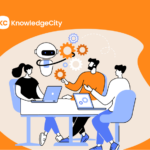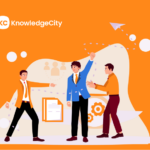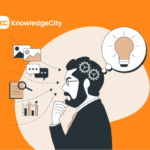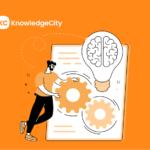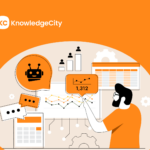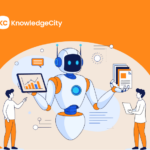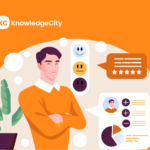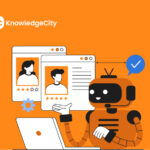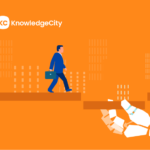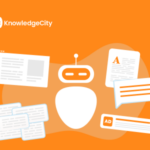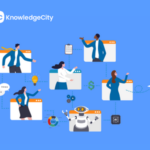Artificial Intelligence is already transforming how work gets done across industries. Its use is no longer limited to experimental tools or isolated departments. From customer support to strategic planning, AI is becoming part of daily operations with increasing speed and influence.
For Learning and Development (L&D) teams, AI tools offer real benefits. They accelerate content development, reduce manual effort, and provide on-demand support. But beneath this efficiency lies a deeper challenge, one that affects how employees learn, retain, and apply knowledge.
When AI begins handling parts of the learning process, the outcome can appear efficient on the surface. The material may be delivered quickly and look complete. However, the actual cognitive experience of the learner may be much thinner than it seems.
This blog explores how AI impacts thinking, memory, and retention. You’ll learn:
- Where AI succeeds and where it falls short in supporting learning
- What “cognitive cost” really means, and why it matters
- How AI interferes with deep learning
- Practical ways to design AI-enhanced learning without sacrificing depth
- What HR and L&D leaders should do now to protect long-term learning outcomes
Understanding AI’s Current Capabilities
There is a common belief that AI is capable of human-level reasoning. This is not accurate. Large Language Models (LLMs) like GPT or Claude work by breaking down language into small units called tokens. They process these tokens using patterns learned from internet-scale data and generate the most likely response based on those patterns.
Although the output sounds natural, there is no comprehension behind it. These models mirror human speech but do not grasp meaning. This becomes obvious in tasks that require reasoning or creativity beyond patterns.
Take a few examples:
- Generating random numbers
When asked to pick a number from 1 to 100, models frequently choose “42.” This is not random behavior. It reflects how often that number appears online, especially in references to The Hitchhiker’s Guide to the Galaxy.
- Playing basic games
In a game like tic-tac-toe, AI often makes a losing move. Users observed that language models do not consistently apply the simple rules of the game, even when the solution is obvious.
These failures highlight what Laszlo Bock calls a “jagged frontier,” where AI performs well in some areas but fails in others that seem equally simple. This inconsistency stems from its lack of real reasoning. In learning environments, this leads to a higher cognitive load on the learner, who must interpret, verify, and make sense of the AI’s output without clear guidance.
The Cognitive Cost of Using AI in Learning
At first glance, AI in learning looks like a breakthrough. It speeds up access to information, organizes content neatly, and supports productivity. But speed and convenience often come at a price, especially when they replace deeper cognitive work.
This is where the idea of “cognitive cost” comes in.
Cognitive cost refers to the mental effort learners expend beyond the act of absorbing content. When AI is involved, learners are not just engaging with the material. They’re also navigating prompts, interpreting AI-generated responses, and deciding whether to trust the outputs. These layers of decision-making consume mental bandwidth and divide attention.
Over time, the result is fragmented focus, weakened memory, overconfidence, and a less durable learning experience.
Let’s look at how this plays out in real learning environments.
How AI Interferes with Deep Learning
1. Memory Encoding Becomes Weaker
Learning sticks best when it involves effort, when we wrestle with new ideas, explain them in our own words, or make mistakes and correct them. This active processing helps transfer information from short-term to long-term memory. But when AI takes over these tasks, learners skip those mental steps. As a result, the content may not take root.
2. Attention Becomes Scattered
Modern learning tools often require switching between tabs, tasks, and AI prompts. This constant toggling disrupts concentration. Every switch uses up cognitive resources and makes it harder to fully engage with any one task. Learners walk away with surface-level understanding instead of deep insight.
3. Learners Become Overconfident
AI delivers polished answers quickly. But speed can trick people into thinking they understand something more than they do. Without pausing to reflect, compare perspectives, or apply knowledge, learners may feel falsely competent. This illusion of mastery breaks down in real-life situations.
4. Knowledge Becomes Disconnected
AI often provides information in isolated chunks. Learners get facts without the frameworks that make them meaningful. Over time, this creates a fragmented view, concepts that don’t connect, ideas that don’t transfer, and skills that can’t be applied in new contexts.
5. Reflection and Self-Awareness Decline
Effective learning requires metacognition, the ability to assess your own understanding and adjust strategies. When learners lean too heavily on AI to explain or decide what’s right, they lose this self-monitoring habit. Learning becomes passive, and personal responsibility fades.
Why These Risks Matter to HR and L&D Teams
The warning signs won’t appear in your dashboards. Training sessions get finished. AI tools show high usage. On the surface, everything seems to be working.
But beneath that, something critical is being overlooked:
This affects more than just training outcomes. It influences how your workforce thinks, grows, and performs. When employees don’t engage deeply, their ability to solve problems, adapt to change, and make informed decisions weakens over time. The habit of learning fades, and the organization becomes vulnerable.
HR and L&D teams need to ensure AI supports meaningful learning. That means using it to enhance thinking, not replace it.
Make AI a Partner in Thinking and not a Substitute for It
AI doesn’t need to dilute learning. With the right approach, it can support deeper thinking, sharper skills, and better retention. The key is to design learning experiences that use AI without removing the mental effort that makes learning stick.
Here’s how to put that into practice:
1. Build in cognitive effort
Avoid handing learners polished, AI-generated answers without involvement. Let them analyze AI outputs, spot errors, or compare them with their own thinking. Even brief moments of friction help reinforce learning and improve retention.
2. Teach how to interact with AI intentionally
Equip learners with the skills to question, test, and apply AI responses. Encourage them to explore why something works, not just accept it. This keeps their reasoning active and grounded in real understanding.
3. Slow the process where depth is essential
In areas like leadership, ethics, or compliance, rushing leads to shallow learning. Encourage learners to pause, reflect, and discuss. Journaling, coaching conversations, or peer discussions can help ideas take root.
4. Keep human interpretation involved
AI delivers information, but people give it meaning. Use team discussions, manager feedback, and group activities to connect concepts to workplace realities. This helps learners see how knowledge fits into their roles and goals.
5. Measure what leads to long-term value
Don’t rely only on dashboards or completion rates. Include metrics that track real-world application, behavior change, and knowledge retention over time. What matters is not how much content is consumed, but how well it is applied.
Supporting Smarter AI Use Starts with Smarter Learning Design
The goal isn’t to avoid AI, it’s to use it well. HR and L&D teams have a real opportunity right now to guide how AI is integrated into workplace learning. That means shaping not just what employees learn, but how they learn, think, and grow with AI in the picture.
At KnowledgeCity, we understand both the promise and the pitfalls of AI in training environments. That’s why our platform goes beyond surface-level content. Our AI-focused training courses are designed to help your teams work more thoughtfully and confidently with AI, whether that means using it to automate tasks, enhance problem-solving, or support continuous learning.
We combine evidence-based learning design with up-to-date AI knowledge, helping L&D professionals deliver experiences that improve performance without sacrificing depth. Whether you’re just beginning to integrate AI into your training programs or looking to optimize your current approach, our courses and support can help you strike the right balance.
Explore how KnowledgeCity can support your organization in building AI-literate, thinking-driven teams, because great learning shouldn’t just be fast. It should last.
Subscribe to Our Newsletter
Join 80,000+ Fellow HR Professionals. Get expert recruiting and training tips straight
to your inbox, and become a better HR manager.


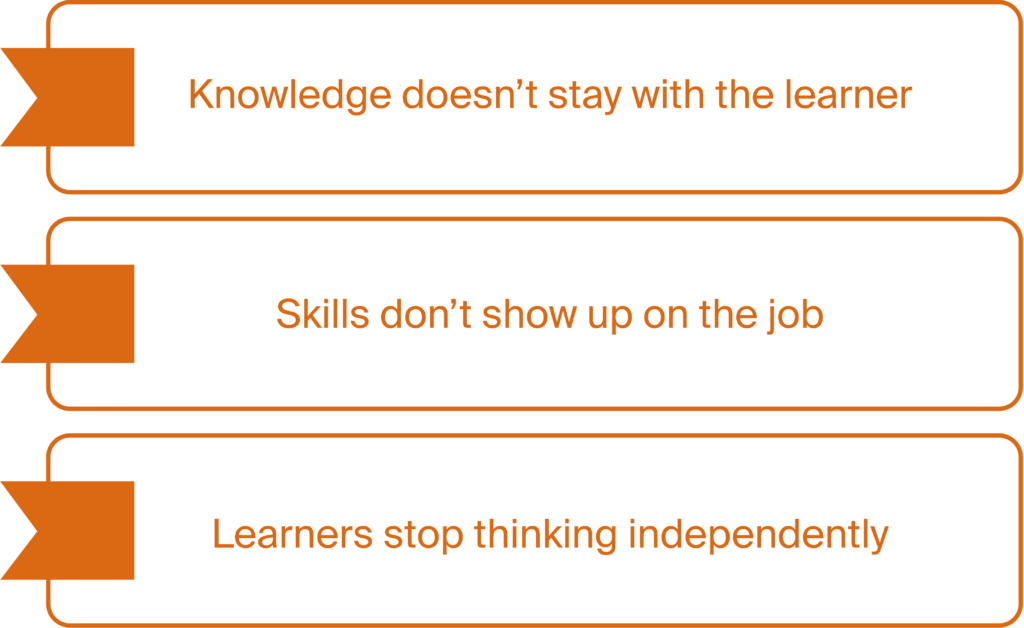

 KnowledgeCity
KnowledgeCity 
